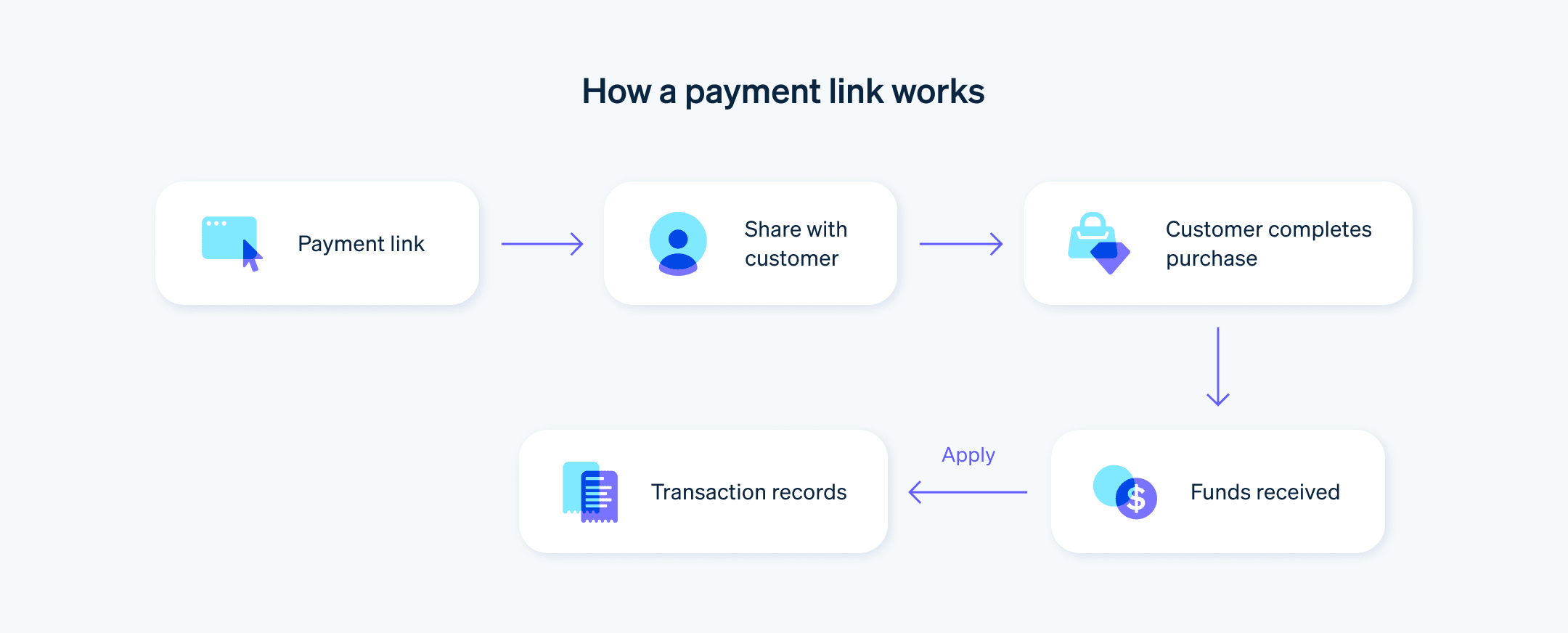如果您的企业通过在线渠道向客户销售商品,您可能熟悉不断努力减少购物体验中的阻力,并利用各种手段来提高转化率的持续项目。无论您销售什么,在哪里销售,或是面向哪些受众,支付链接都是您的灵活工具。如果您没有网站——或者没有支持电子商务的网站——但您想在线销售商品、服务或订阅,支付链接可能是一个不错的选择。支付链接远非一种通用的电商工具,它更像是一种“单一工具,适应任何规模”的解决方案,解决了在线销售客户时一些最棘手的挑战。
根据 Baymard Institute 的研究,超过 69% 的在线购物车在购买前被放弃。发生这种情况的原因有很多,从过高的运输成本到潜在客户对注册账户才能完成购买的前景犹豫不决。但根据研究,有整整 17% 的美国在线购物者因为结账过程“过于冗长/复杂”而放弃了订单。这正是支付链接能够有效减少的转化漏斗掉落现象之一,但这仅是它们的一个好处。
以下是企业需要了解的关于支付链接及其在不同场景中使用的所有信息。
目录
- 什么是支付链接?
- 谁在使用支付链接,为什么?
- Stripe 支付链接
- 如何创建 Stripe Payment Link
- 如何发送 Stripe Payment Link
- 跟踪支付链接
- 如何创建 Stripe Payment Link
- 支付链接的好处
- 支付链接费用
- 支付链接替代方案
什么是支付链接?
支付链接是一个 URL、按钮或二维码,可以将客户直接带到一个独特的结账页面以完成购买。支付链接可以快速、轻松地创建,并可以通过网络浏览器、短信、电子邮件或社交媒体帖子进行访问。支付链接允许企业创建支付页面并直接与客户共享链接。Stripe 支付链接无需编码,可以在任何渠道(包括电子邮件、社交媒体和短信)上无限次共享。

谁在使用支付链接,为什么?
任何希望促进在线直接客户购买的企业都可以使用支付链接。如果这听起来像一个非常广泛的定义,那是因为确实如此:支付链接在各个行业中被使用,以鼓励几乎任何数字消费者群体的购买。支付链接的超能力在于其多功能性——几乎可以用于任何类型的在线购买。
以下是使用支付链接可能促进客户交易的几种常见情况:
您没有网站。
或者至少没有一个支持电子商务的网站。也许您仍在构建电子商务网站,或者您很少需要在线处理支付,因此根本不打算构建一个。无论哪种情况,支付链接都是需要在线处理支付但没有支持支付的网站的企业的简单、可靠的解决方案。您进行大量短信营销。
支付链接是文本消息向客户宣传的理想工具。如果您有一个强大的短信营销名单,而这对您的业务是一个重要的销售渠道,支付链接就是一个毫无疑问的选择。您有多个客户群体。
如果您的业务面向不同的受众群体,并且您倾向于为每个群体使用定向信息,支付链接将使您能够创建针对每个客户类别优化的定制支付页面。您正在筹款或收集捐款。
在向消费者销售商品和服务时,拥有顺畅、高效的结账流程很重要,但当您试图收集慈善捐款时,这一点变得更加重要。如果您希望人们捐款,机制必须尽可能简单,否则您就有可能失去潜在支持者的行动力。支付链接是让人们以最小的摩擦和时间投资贡献于筹款活动或向慈善事业捐款的快速、直接方式。您需要在没有硬件的情况下接受支付。
假设您是一家在当地农贸市场销售手工花生酱的商家。一天结束时,一位客户前来购物,但他没有现金,而您的业务合作伙伴几分钟前已经收起了读卡器离开。与其让这位潜在客户离开,不如拿出手机,快速生成一个产品的支付链接,并将其发送给他。企业需要在没有读卡器的情况下接受支付的原因多种多样,支付链接是可以在许多情况下促进支付的多功能工具。您的销售速度很快。
您有及时的产品发布、备受期待的补货,销售情况也迅速——这是任何人看来都相当理想的情况。那么,您如何最大限度地利用客户对您产品的这种兴奋感呢?一种策略是让客户注册接收短信更新,然后在时机到来时发送支付链接。这让您能够利用这些受欢迎产品的紧迫感和稀缺性,给客户提供一种快速采取行动的方式。
Stripe Payment Link
Stripe Payment Link 可以作为接受多渠道支付业务的灵活组成部分,无论是线上、线下,还是两者兼有——同时,Payment Link 也适用于尚未拥有网站的新企业,是快速和简单开始销售其产品的一种方式。Stripe Payment Link 支持 20 多种支付方式,包括信用卡、借记卡以及如 Apple Pay 和 GooglePay 等数字钱包。支付页面支持 30 多种语言,并会根据客户在其浏览器中设置的首选语言自动翻译。
Stripe Payment Link 允许用户为其支付页面添加自定义颜色和其他品牌元素;添加商店政策和联系信息;创建支付链接的二维码;并启用促销代码、交叉销售和追加销售。
如何创建 Stripe Payment Link
Stripe Payment Link 仅在拥有 Stripe 账户的情况下可用,因此如果您还没有账户,您需要先注册。注册并登录 Stripe 后,转到您的管理平台。然后,点击 Payment Link,按照以下步骤操作:
- 选择 +添加新产品。
- 填写产品详细信息。
- 点击添加产品。
- 点击下一步。
- 点击创建链接。
创建新支付链接后,您将自动看到详细信息页面。就是这样——链接已准备好共享。
对于想要批量创建支付链接的企业,Stripe 允许用户通过 API 生成。
如何发送 Stripe Payment Link
发送 Stripe Payment Link 就像发送任何其他链接一样:复制并粘贴到您想共享的任何地方。同一个链接可以重复使用,次数不限。
跟踪支付链接
一旦您在外部发送了支付链接,就可以在管理平台上跟踪它们的表现。
支付链接的好处
支付链接的简单和简化特性使其对企业极具吸引力。如果您告诉企业,他们可以获得独立的产品页面,方便完成购买而无需点击其他页面,可能他们立刻就能看到潜力。
除了支付链接的优雅简洁外,还有以下几个显著好处:
为客户提供更简单的支付体验:
支付链接可以通过电子邮件和短信发送或在社交媒体上共享。客户只需一次点击即可完成交易。简单得几乎没有比这更简单的了。更好的转化率:
无论您的购物车放弃率是多少,想象一下它显著降低的情况——这正是支付链接能为您的业务带来实质性改变的地方。支付链接的灵活性可以帮助您接触新受众,更好地针对现有的受众群体。整体而言,支付链接可以比其他结账方式产生更好的转化率。高度可定制:
而您的电商网站只允许您提供一种支付体验,必须对每个受众群体都相关,支付链接则为创建自定义支付页面提供了一种无限动态的机制。无论是创建与特定活动相关的支付链接,还是为特定客户群体提供定制体验,支付链接都是创建尽可能多自定义支付时刻的低承诺方式。
支付链接费用
支付链接已经纳入 Stripe 的定价模型,这意味着企业在创建支付链接和使用它们接受支付时不需要支付任何额外费用。如果您将支付链接与其他 Stripe 解决方案(如经常性支付的 Billing 或 Stripe Tax)结合使用,那么您仍需支付与这些服务相关的任何适用费用,就像通过其他方式完成交易一样。但除此之外,使用支付链接不对 Stripe 用户额外费用。
支付链接替代方案
对于在线交易,支付链接的主要替代方案就是拥有一个设置支持电子商务的网站。一旦您有了一个允许客户在线完成购买的网站,并且获得了支付处理支持,您可以使用直接链接到产品页面的方式,与支付链接类似地进行分享。当然,这些链接缺乏支付链接的功能,但它们仍能将流量引导到您的网站,并希望最终进入结账流程。
但事实是,任何支付链接的替代方案最终都强调了支付链接自身的独特好处——没有其他工具能够让客户直接、轻松地采取行动并在线完成购买,而不必经历更复杂的结账流程。
本文中的内容仅供一般信息和教育目的,不应被解释为法律或税务建议。Stripe 不保证或担保文章中信息的准确性、完整性、充分性或时效性。您应该寻求在您的司法管辖区获得执业许可的合格律师或会计师的建议,以就您的特定情况提供建议。